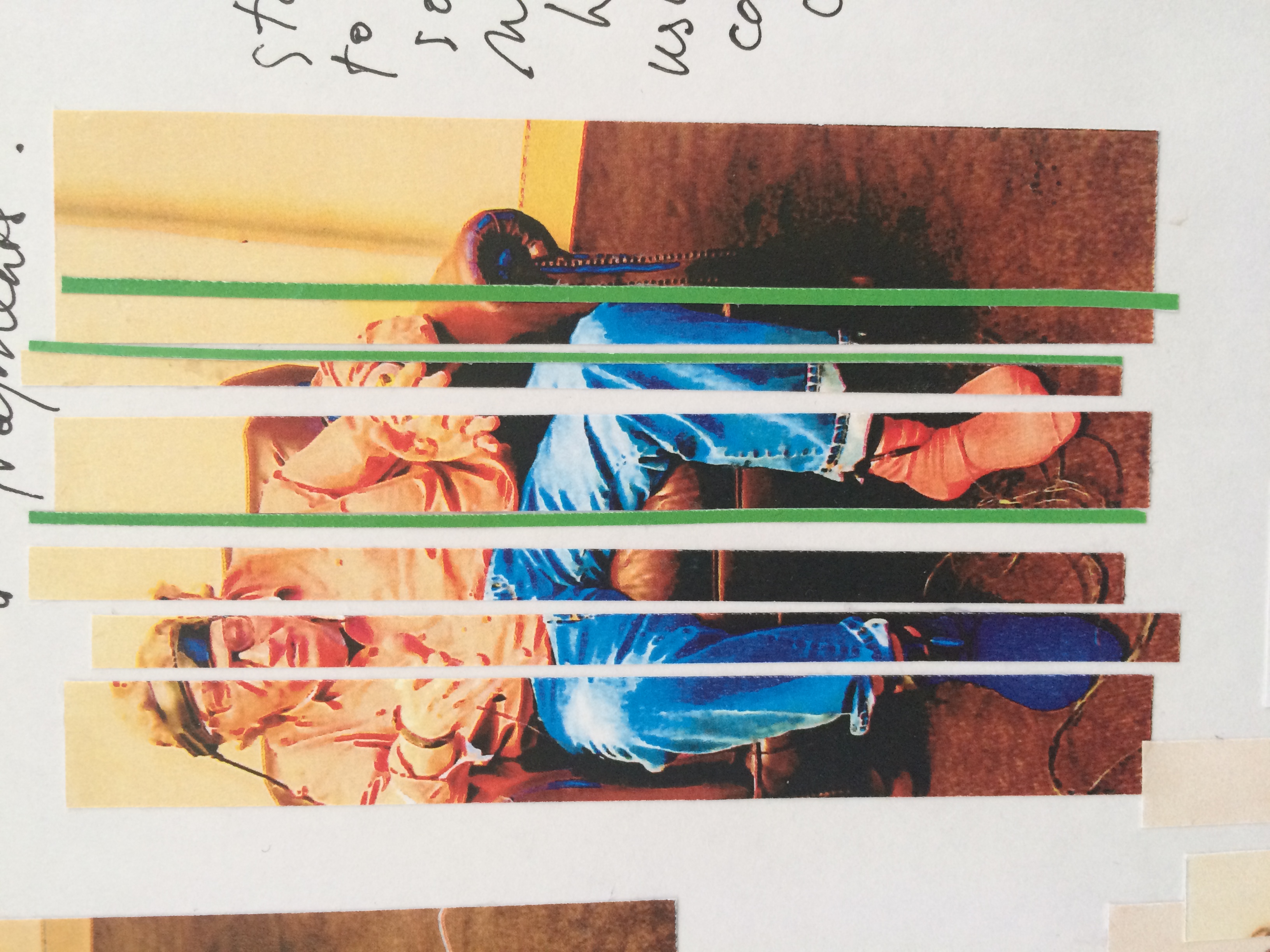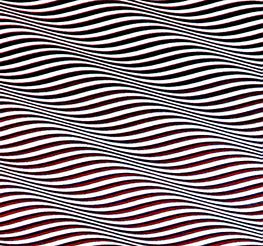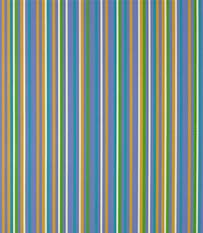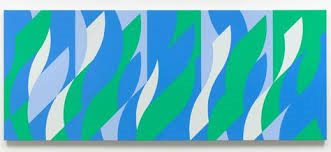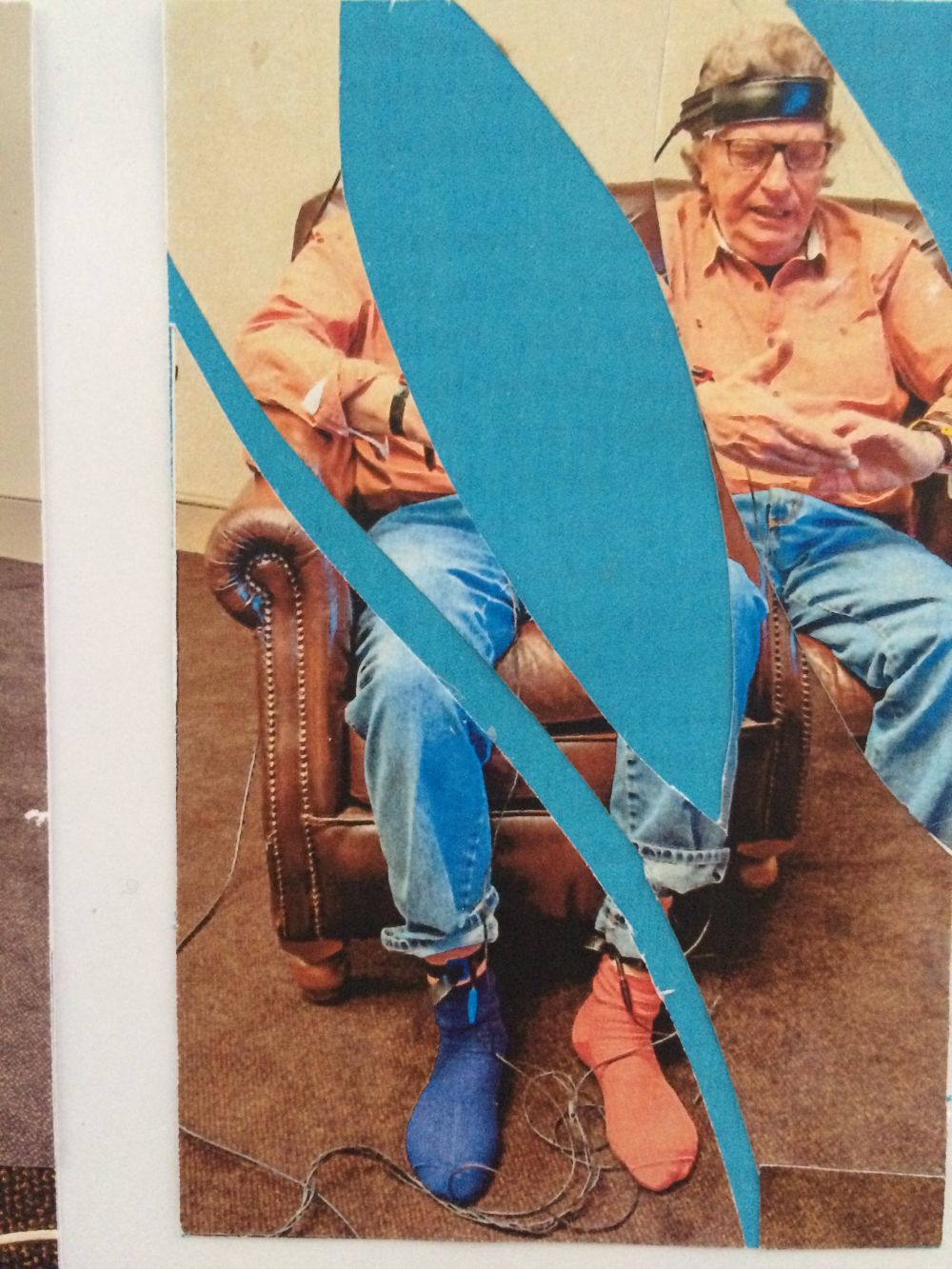Written by Julia Ovenden, MA Art and Science student at Central Saint Martins
I joined the MA Art & Science with 15 years of experience in vibrational and electro-physiological medicine. It is the science of my clinic which is somewhat exclusive that I hope to bring to my art in an inclusive way. The physics of medicine is relevant to all as human functioning consists of multiple interactive energy systems. One aspect of my practice is the Eductor biofeedback system which uses 4 volts of electricity to stimulate healing in the body. It does this via an electromagnetic head harness, wrist and ankle straps and corrects aberrant frequencies in the biofeedback loop. I am interested in capturing in art the effects of this bio-electrical medicine on our subtle energetic anatomy.
All early artwork starts with a figurative representation of an idea. In Fig. 1 Capturing the Effect of Electricity In The Body I photographed a client in the Eductor harness receiving treatment just to see what it could look like. I used a blue colour filter to evoke the idea of electricity moving into the feet and livening him up. It shows the viewer a biofeedback device in use but not what it looks like to deliver measured quanta of frequency specific energy into the human multidimensional system of mind/body/spirit.

I was drawn to the art of Bridget Riley whose work is full of visual energy, rather than subject matter. Her works coil, swirl and pulse often in wavelike compositions which move with a directional pull. The denial of fixity in her works Shift (1963), Crest(1964) and Current (1964)seem to mimic the unpredictability of nature. They representthe vibrational fluctuation of the human energy field in perpetual interplay with the environment. Current (1964) is the effect of an external electrical current on the human energy field producing an outward ripple effect. I believe it would look something like this.
To use art to express humans as energy beings initially seemed counter intuitive. It meant taking a delicate, energetically evolved multidimensional subtle energy system and transforming it into a 2 or 3-dimensional presentation. I could show fluctuating abnormal patterns of ill-health moving into more cohesive energy patterns of health but biofeedback screens already do this. They present the body electrics as output frequencies on a graph. These medical waveforms are clinically helpful but lack the imagination, composition and emotional power of art. Figs. 2 and 3, show the Eductor’s Body Electrics graph in motion in contrast to Riley’sCataract 3. Cataract 3 expresses a living, moving, vibrant energy field in 2-D. She has captured human vibrational existence ongoing.
Initially, my use of photography would imitate the Eductor software. The Eductor test page presents a ‘snapshot’ of the mental, emotional and physiological frequencies of a client on the day. It is a psycho-biological experience represented as an electrical visual pattern. It highlights ‘truths’ of a client’s vibrational health which may be so suppressed that these vibrational existences are hidden to them. The visual appearance of the frequencies to which they resonate moves the perception from unconscious to conscious. Riley also deals with the “unrecognised” or as she defines it “the im-perceptible”1. Within her works there opens up a “small gap of pure perception before conceptualisation takes over”2.
The development of her work from black and white reduction to colour caused it to move more emotionally and take the viewer “from seeing to feeling”3 and represents how we see the real world. I began photographing the human electrical field using flesh, blue and brown tones to mimic the colours of electrical wiring and human tissue. I added green as contrast as Riley does in Lilac Painting 1 (2008/1983) to instill an irregular rhythm (Fig.4). However, these three colours lack a tonal quality and a colour totality. Riley’s group of colours in Orphean Elegy 2 (1978) with its harmonies and complementaries is the health and wellbeing of striated muscle tissue gently rippling. There exists the tranquility of a constant, unimpeded, natural flow of life energy.
Riley’s work develops into curves through the influence of Matisse, though the form of the curves is her own. She pairs two colours or uses three in which the foreground and background shapes move. These curved paintings demonstrate a flow of space where the space plays a different role as you view it. It moves from closer to further away. I attempt this in Fig. 5 but am not skilled enough yet to let go of a visible human form to explain a medical device which benefits mankind. In contrast, Riley’s work takes out any ethnicity or gender and she has made it universal.
At its simplest, the human electrical field exists in pure potential for transformation. The more enlightened vibrational physicians with their subtle energetic methods of detection and treatment can alter dysfunctional patterns of expression in the earliest stages to avert disease. If I am to capture the effect of electricity in the body for the public to see then these works of Bridget Riley are evidence that it can be done in abstraction. With appropriate use of colour, form and repetition I can take the public along a continuous, gently pulsing and harmoniously changing view of themselves on an energetic level.
J. Ovenden MAAS 2019/20
Bibliography:
1-3 Riley, B. and Shiff, R. (2004) Bridget Riley. New York: PaceWildenstein. pp.14, 5,6.
Post-Grad Stories
A thriving online magazine of our postgraduate student voices sharing thought-provoking experiences, practices and articles about what matters to them.
Want to write an article? Get in touch with the Post-Grad Community team PGCommunity@arts.ac.uk
